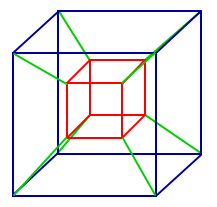The following is a “proof” that one equals zero.
Consider two non-zero numbers x and y such that
x = y.
Then x2 = xy.
Subtract the same thing from both sides:
x2 – y2 = xy – y2.
Dividing by (x-y), obtain
x + y = y.
Since x = y, we see that
2 y = y.
Thus 2 = 1, since we started with y nonzero.
Subtracting 1 from both sides,
1 = 0.
What’s wrong with this “proof”?
Presentation Suggestions:
This Fun Fact is a reminder for students to always check when they are dividing by unknown variables for cases where the denominator might be zero.
The Math Behind the Fact:
The problem with this “proof” is that if x=y, then x-y=0. Notice that halfway through our “proof” we divided by (x-y).
For a more subtle “proof” of this kind, see One Equals Zero: Integral Form.
How to Cite this Page:
Su, Francis E., et al. “One Equals Zero!.” Math Fun Facts. <http://www.math.hmc.edu/funfacts>.
References:
R. Vakil, A Mathematical Mosaic, 1996. p. 199.
Fun Fact suggested by:
James Baglama

